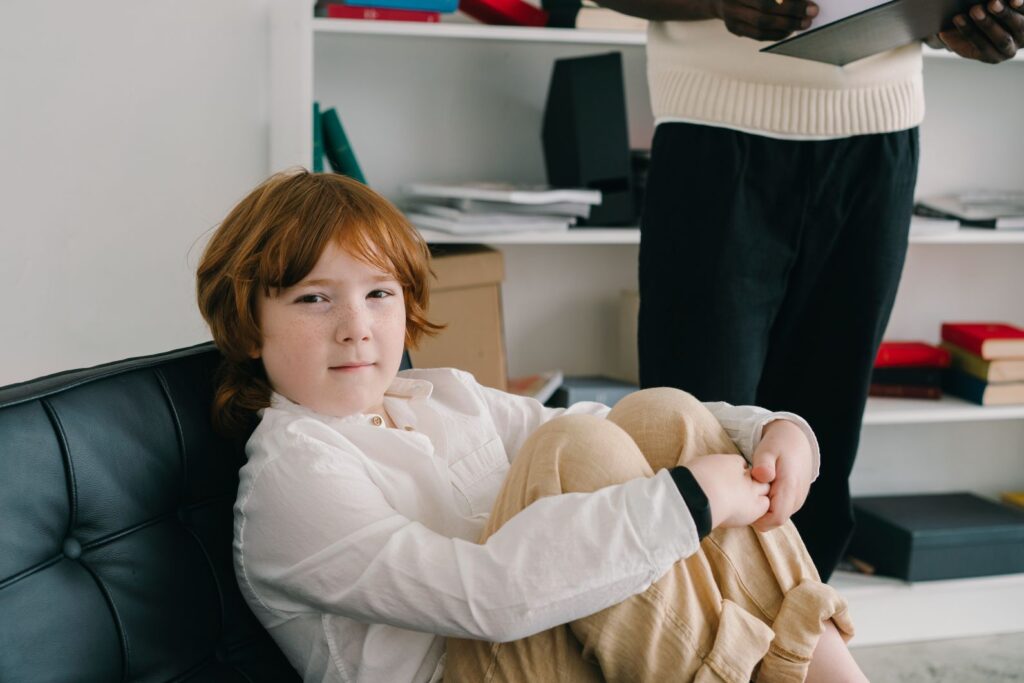As a parent, you want what’s best for your child. Seeing them struggle with sensory input or everyday activities can be heartbreaking. Since you’re here, you’ve probably already taken the first steps toward improving your child’s outcome with occupational therapy (OT).
Now, you’re nervous because you don’t know how to prepare or what to expect. Starting services can be scary, but it doesn’t have to feel that way. These tips and reminders will help you gain confidence going into your child’s first OT session.
Table of Contents
1. You’ll Fill Out Tons of Paperwork
Before you head off to your child’s first OT appointment, you’ll likely receive a slew of paperwork to fill out. The forms will include information about medications, family history, patient history, insurance information and much more.
To expedite the process, have all those items filled out to bring with you that first day. Even though you feel you poured every detail into those documents, don’t be surprised if you have even more paperwork to complete once you arrive.
2. You’ll Answer Countless Questions
Despite the details you spilled on your intake forms, the therapist will have even more questions for you about your child. These will be much more specific to the intended treatment.
You should prepare to tell the OT any sensory processing difficulties your child experiences, their favorite colors, special toys they love, characters they respond well to and anything your child doesn’t like.
These tidbits will help the therapist formulate a plan specific to your child. They’ll use this information in conjunction with their assessment and your goals.
3. You Need to Know Your Goals
After conducting the first assessment, your child’s OT will have some opinions about goals. However, your input is still essential to the planning process. After all, the therapist only sees your child occasionally, whereas you see them every day. You know your child best — their weakness and strengths.
Come prepared with a list of things you see your kids struggling with and where you see room for improvement.
4. You Should Bring Comfortable Clothes

Even at the first appointment, your child will be climbing on things, running around and playing. OT clinics are like large playgrounds with tons of fun things to do. As such, you want to dress them in comfy, moveable clothes or pack a spare set. You should also bring socks since they’ll need to walk around barefoot at least part of the time.
5. You’ll Be Overwhelmed With Information
As you and the therapist determine goals for your child and develop a treatment plan, you’ll get overloaded with information.
Bring a notebook and pen, or create a note on your phone to jot down any details you want to remember later. You can also ask to take photos or videos of specific exercises so you can replicate them at home with your child.
6. You Should Plan to Be There for a Few Hours
The intake appointment is always the longest. Your child’s OT needs the extra time to get to know you and your kid well enough to design a treatment plan.
They’ll perform several assessments, including some free play and instruction-based time. While you’re there, it’s up to the therapist to decide if you should remain in the room with your child or on the other side of the one-way glass.
7. You Should Prep Your Child
As with any type of therapy, you should properly prep your child before going to the first session. You’ll need to reach them where they’re at regarding age and understanding. Reassure your child that OT is a good thing. They get to play and have fun, and they’ll improve tasks they currently struggle with.
For example, if your little one has difficulty with scissors, they can work toward getting to make more crafts on their own. If your child is old enough, you could even ask them for skills they’d like to improve and bring them up to the therapist as a goal.
8. Your Child Might Not Cooperate
No amount of preparation will get your child to cooperate with the therapist during the first appointment. Your child’s OT will still give them the most accurate assessment possible, though it may take a few sessions to gather all the necessary information.
It may take time for your child to build trust with their therapist, so the best thing you can do is continue to encourage them and support their therapy at home in the meantime.
Your Mood Will Determine Theirs

Hopefully, this information has put your mind at ease and inspired some confidence. It’s essential to control your mood going into this first appointment.
Your young child is watching your every move and will take cues from you. If you look like a ball of anxiety, they’ll act more fearfully and won’t benefit as greatly from the session. On the other hand, if you seem eager and prepared, your child will be more at ease.













